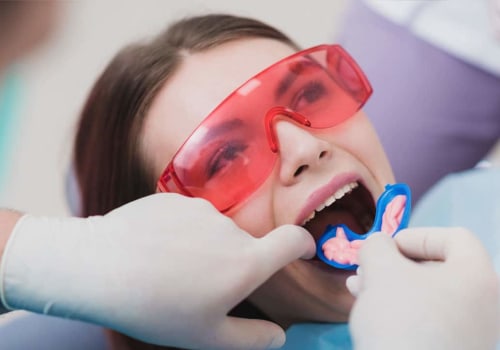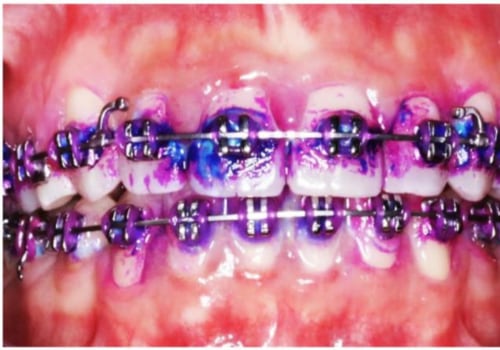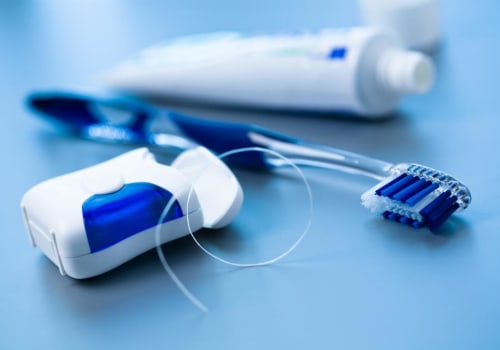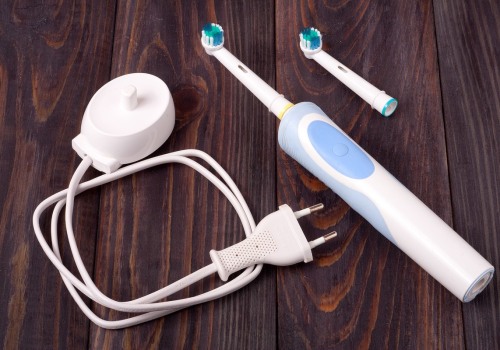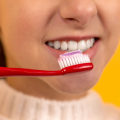Good dental hygiene is essential for your overall health and wellbeing. Flossing is an important part of any dental care routine and it can be overwhelming to know where to start. In this comprehensive overview, we will look at the different techniques and tips for flossing, as well as the benefits that it can bring. Flossing is one of the most effective ways to remove plaque and food particles from between your teeth and along the gum line. It helps to reduce the risk of gum disease, bad breath, and cavities.
With regular and correct flossing techniques, you can keep your teeth and gums healthy and strong for years to come. We’ll discuss the different types of floss available, how to correctly floss your teeth, and the benefits of flossing. So read on to learn more about flossing techniques and how they can help keep your smile healthy!Flossing is an important part of maintaining good dental health. It is an effective way to remove plaque and food particles from between your teeth and around the gum line, areas that your toothbrush simply can't reach. By removing plaque and debris from these hard-to-reach places, flossing helps to prevent cavities and gum disease.
It is also an essential part of a complete oral hygiene routine.
The importance of flossing
- Flossing is an important part of taking care of your teeth and gums, as it helps to keep them free from plaque and food debris that can cause cavities and gum disease. It is recommended that you floss at least once a day, and preferably after each meal. Flossing helps to reduce the risk of cavities, gingivitis, and other dental problems. It also helps to remove debris from between teeth, which can help to prevent bad breath.Different types of floss
- There are many different types of floss available on the market.Waxed floss is coated in wax, which makes it easier to slide between teeth. Unwaxed floss is usually thinner and less likely to tear or shred. Flavored floss can make it more pleasant to use, as it will add a pleasant taste. There are also special types of floss for braces or bridges.
Tips for flossing correctly
- When it comes to flossing correctly, there are a few tips to keep in mind.First, use about 18 inches of floss and wrap it around your middle fingers. Then, use your thumbs and index fingers to hold the floss tightly against the sides of each tooth. Make sure to gently slide the floss up and down each side of the tooth, using a sawing motion. Don’t forget to floss behind your back teeth!Common mistakes to avoid when flossing - Flossing incorrectly can lead to gum irritation or even injury.
To avoid this, make sure that you are using gentle pressure when sliding the floss between your teeth. Also, be careful not to snap or yank the floss through the space between your teeth, as this can cause damage to the gums or other soft tissues in the mouth.
Benefits of flossing
- Flossing has many benefits for oral health. In addition to helping to prevent cavities and gum disease, it also helps to reduce bad breath by removing food particles and plaque from between your teeth. Flossing also helps to remove plaque from hard-to-reach areas, which prevents tartar buildup on your teeth.How often to floss
- The American Dental Association recommends that you floss at least once a day, ideally after each meal or snack.However, some people may need to floss more frequently depending on their oral health needs.
When to visit the dentist for a professional cleaning
- Even if you are diligent about brushing and flossing daily, it is still important to visit your dentist regularly for a professional cleaning. This helps to remove any tartar buildup that has accumulated since your last visit. It also gives your dentist an opportunity to check for any signs of decay or gum disease that may have gone unnoticed.How Often To Floss
Flossing should be done at least once a day, ideally after each meal. This helps to keep the spaces between your teeth clear of food particles and plaque buildup.Doing so helps to protect your teeth and gums from cavities and gum disease. However, individual needs for flossing may vary. For those with periodontal disease, flossing more often is recommended. Those with braces may need to floss even more frequently, as food particles can get stuck in the braces and lead to tooth decay. Additionally, people with a higher risk of cavities or gum disease may need to floss more often. It's also important to understand how to floss correctly.
If done improperly, it can cause damage to the gums or teeth. Take your time, use a waxed dental floss and move the floss up and down between each tooth gently.
Tips for Flossing Correctly
It’s important to floss correctly to ensure that you’re getting the most benefit from your oral hygiene routine. To floss correctly, use an up-and-down motion instead of a sawing motion. When you floss, use an 18-inch piece of dental floss and wrap most of it around the middle finger of one hand and the remaining floss around the middle finger of your other hand.Gently slide the floss between two teeth, taking care not to snap or force the floss. Curve the floss into a C shape against one tooth, and then slide it up and down against the side of the tooth. Slide the floss to the gum line, and then curve it again to clean the other side of the tooth. When you’ve finished one tooth, be sure to use a new area of floss before moving on to the next tooth. When you’re done flossing, rinse your mouth with water or mouthwash.
This will help remove any plaque or food particles that were loosened by flossing. Be sure to floss at least once a day, preferably before bedtime, as this will help keep your teeth and gums healthy.
The Importance of Flossing
Flossing is an important part of maintaining good dental health. It helps to remove plaque and food particles from between your teeth that your toothbrush can't reach, which prevents the buildup of bacteria, preventing cavities and gum disease. Flossing can help to remove plaque and bacteria that accumulate between teeth, as well as in hard-to-reach areas that brushing alone can’t access.Flossing helps to prevent cavities by removing food particles and plaque from between your teeth, while also preventing gum disease by removing plaque and bacteria from the gums. Regular flossing can help to reduce the risk of developing cavities and gum disease, as well as helping to maintain overall oral health. Flossing is an effective way to reduce the risk of cavities and gum disease, as it helps to remove plaque and food particles from between your teeth that brushing alone can’t reach. Regular flossing helps to remove plaque and bacteria from the gums, which can lead to gingivitis or periodontitis if left untreated. Flossing also helps to prevent bad breath, as it helps to remove food particles and bacteria from between your teeth. In short, flossing is an important part of good dental hygiene.
It helps to remove plaque and food particles from between your teeth that brushing alone can’t reach, helping to prevent cavities and gum disease. Regular flossing can also help to reduce bad breath, as it helps to remove food particles and bacteria from between your teeth.
When To Visit the Dentist for a Professional Cleaning
It is important to visit the dentist for a professional cleaning at least once every six months or when you experience changes in your oral health. Regular dental cleanings help maintain your oral health and prevent the development of cavities and gum disease. Depending on your oral health needs, different individuals may need to visit the dentist more or less frequently. Individuals who are at risk for cavities and gum disease should visit the dentist more often.This includes those with existing dental problems, individuals who smoke or chew tobacco, pregnant women, people with diabetes, and those with poor oral hygiene habits. Additionally, individuals who have braces or other dental appliances should visit the dentist more regularly. Children should also visit the dentist regularly. It is recommended that children visit the dentist twice a year for a professional cleaning and checkup. During these visits, the dentist can assess their risk for cavities and gum disease and provide personalized recommendations for maintaining good oral health. Overall, it is important to visit the dentist for a professional cleaning once every six months or when you experience changes in your oral health.
For individuals at risk or with special needs, more frequent visits may be necessary. The dentist can provide personalized recommendations based on your individual oral health needs.
Benefits of Flossing
Flossing is an important part of maintaining good dental health. Regular flossing can provide a range of benefits, such as improved dental health, fresher breath, and a brighter smile. By removing plaque and food particles from in between your teeth, flossing helps to prevent cavities and gum disease.Flossing can help to keep your teeth and gums healthy by reducing the risk of cavities and gum disease. Studies have shown that those who floss regularly have fewer cavities and less gum inflammation than those who do not. Flossing can also help to reduce bad breath and give you a brighter smile. Flossing can also help to improve your overall quality of life.
By keeping your teeth healthy, you can reduce your risk of developing dental problems that can lead to pain, discomfort, and expensive treatments. Improved dental health can also lead to improved self-confidence. Finally, regular flossing can help to reduce your risk of developing serious health problems, such as heart disease or stroke. Studies have shown that those with poor oral hygiene are more likely to suffer from chronic conditions like heart disease or stroke than those with good oral hygiene.
In conclusion, flossing is an important part of maintaining good dental health. By removing plaque and food particles from in between your teeth, flossing helps to reduce the risk of cavities and gum disease, as well as freshen breath and improve self-confidence. Additionally, regular flossing can help to reduce the risk of developing serious health problems like heart disease or stroke.
Different Types of Floss
Flossing is an essential part of maintaining good dental health. Different types of floss are available on the market, each with its own set of pros and cons.Waxed floss is coated in a thin layer of wax that makes it easier to slide between teeth and under the gum line. Unwaxed floss is thinner and more flexible than waxed floss, making it ideal for tight spaces between teeth. Flavored floss is often coated in a sweet-tasting substance like mint or cinnamon, which can help make flossing more enjoyable. Waxed floss is a great choice for people who have difficulty flossing due to tight spaces between their teeth.
The wax coating helps the floss slide easily between teeth and under the gum line. It also prevents the floss from shredding or breaking when used. The downside of waxed floss is that it can be harder to clean between teeth because the wax can leave behind residue. This type of floss is also less likely to shred or break when used.
However, unwaxed floss can be more difficult to use because it can be harder to slide between teeth and under the gum line. Flavored floss is a great option for people who find regular flossing unpleasant. The sweet flavor can help make the task more enjoyable and encourage regular use. The downside of flavored floss is that it can leave behind sugary residue on the teeth, which can increase the risk of cavities if not removed properly. When choosing a type of floss, it’s important to consider your individual needs.
If you have difficulty with tight spaces between your teeth, waxed floss may be the best choice. For those who find regular flossing unpleasant, flavored floss can make the task more enjoyable. Unwaxed floss is a good option for those who prefer a thinner and more flexible type of floss. No matter which type you choose, it’s important to use it regularly to help keep your teeth and gums healthy.
Common Mistakes to Avoid When Flossing
Flossing is an important part of maintaining good dental health, but it's important to know how to do it correctly.People often make mistakes when flossing, which can lead to gingivitis, gum disease, and other oral health issues. Here are some of the most common mistakes people make when flossing, and tips on how to avoid them:Using Too Much Force:One of the most common mistakes people make when flossing is using too much force. People often think that by applying more pressure they can remove more plaque, but this isn't true. In fact, using too much pressure can cause your gums to become irritated and bleed.
To avoid this, use a gentle rocking motion when flossing between your teeth.
Not Flossing Enough:
Another mistake people make is not flossing enough. While brushing your teeth twice a day is important, it's not enough to get rid of all the plaque and food particles between your teeth. Flossing at least once a day will help remove these particles and keep your teeth and gums healthy.Not Using the Right Type of Floss:
The type of floss you use is important. Different types of floss have different thicknesses, so it's important to choose one that fits comfortably between your teeth without causing discomfort.Waxed floss is often recommended as it slides easily between teeth, while un-waxed floss is better for those with wide gaps between their teeth.
Not Replacing Your Floss Regularly:
It's important to replace your floss regularly to ensure it's clean and effective. Using a frayed or worn out piece of floss can be ineffective and cause irritation. It's recommended to replace your floss at least once a month.Not Brushing After Flossing:
It's important to brush after flossing to ensure all the plaque and food particles have been removed. Use a soft-bristled toothbrush and circular motions when brushing for the best results. Flossing is an essential part of maintaining good dental health.It removes plaque and food particles from between teeth that your toothbrush can’t reach, helping to prevent cavities and gum disease. There are several types of floss, and it is important to use the right technique to ensure effective cleaning. Common mistakes to avoid include not flossing enough, using too much pressure, and forgetting to get regular professional cleanings. Flossing regularly can help protect your teeth and gums, so it is important to make it part of your oral hygiene routine.
We hope this article has been helpful in providing an overview of the importance of flossing, different types of floss, and tips for proper technique.
